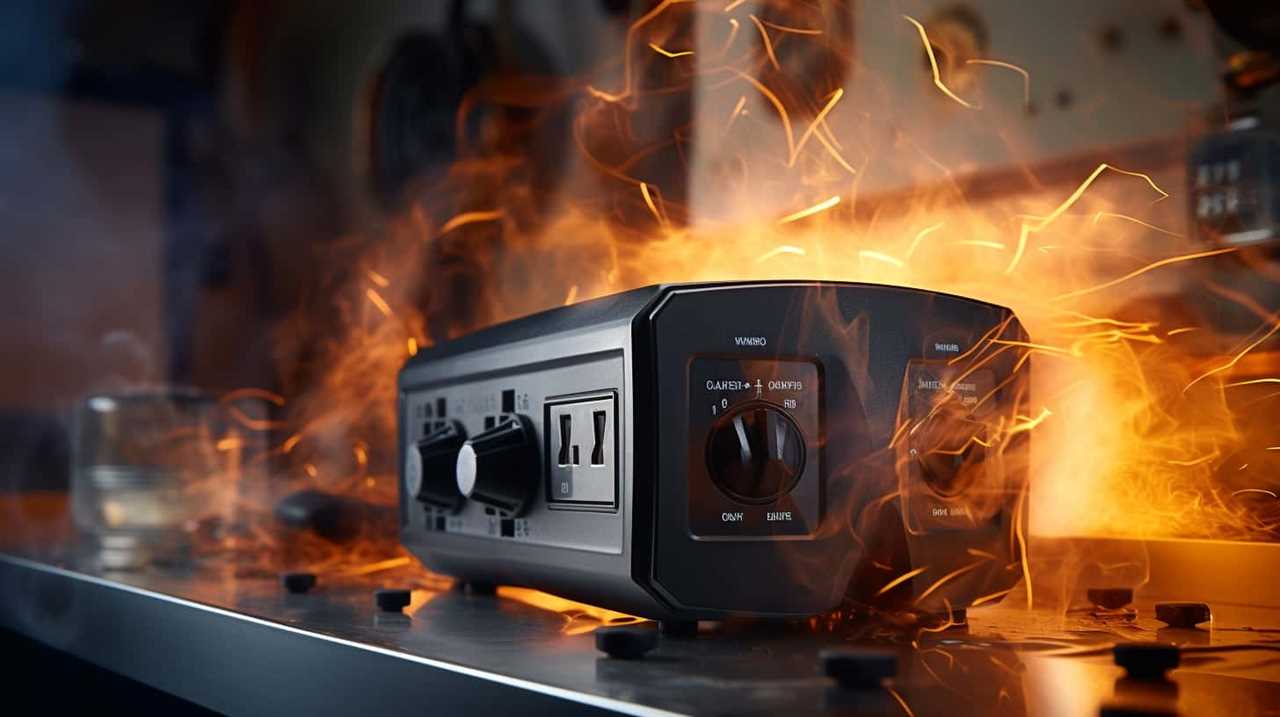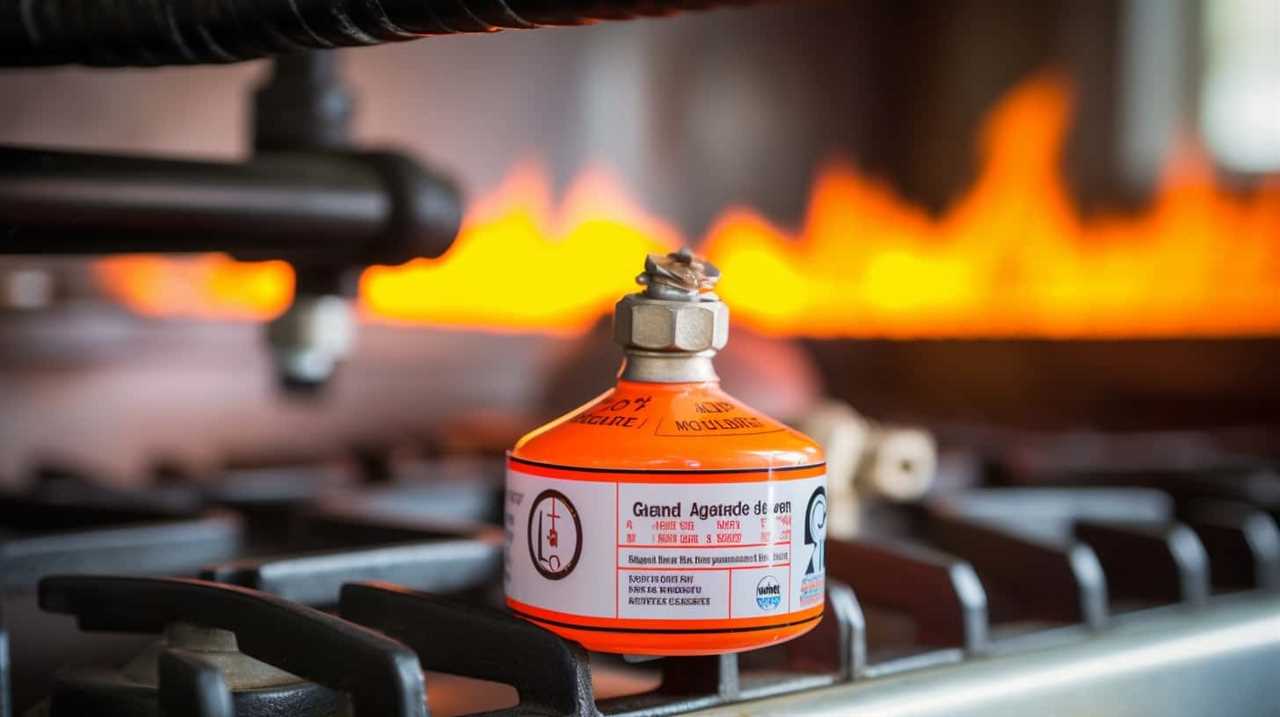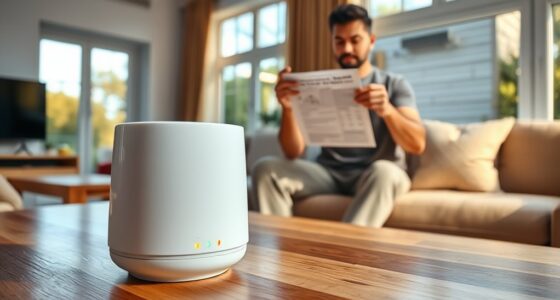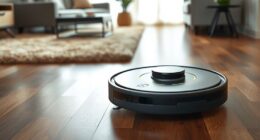Have you ever pondered if our household appliances operate on AC or DC power?
Translated: We have all wondered at some point, do our home appliances run on AC or DC power?
In this article, we’ll delve into the technicalities and unveil the secrets behind the electrical power that fuels our everyday devices.
From the history of electrical power in homes to the role of transformers in distribution, we’ll explore the benefits and safety considerations of both AC and DC power.
So, let’s dive in and discover which type of power our appliances really rely on.
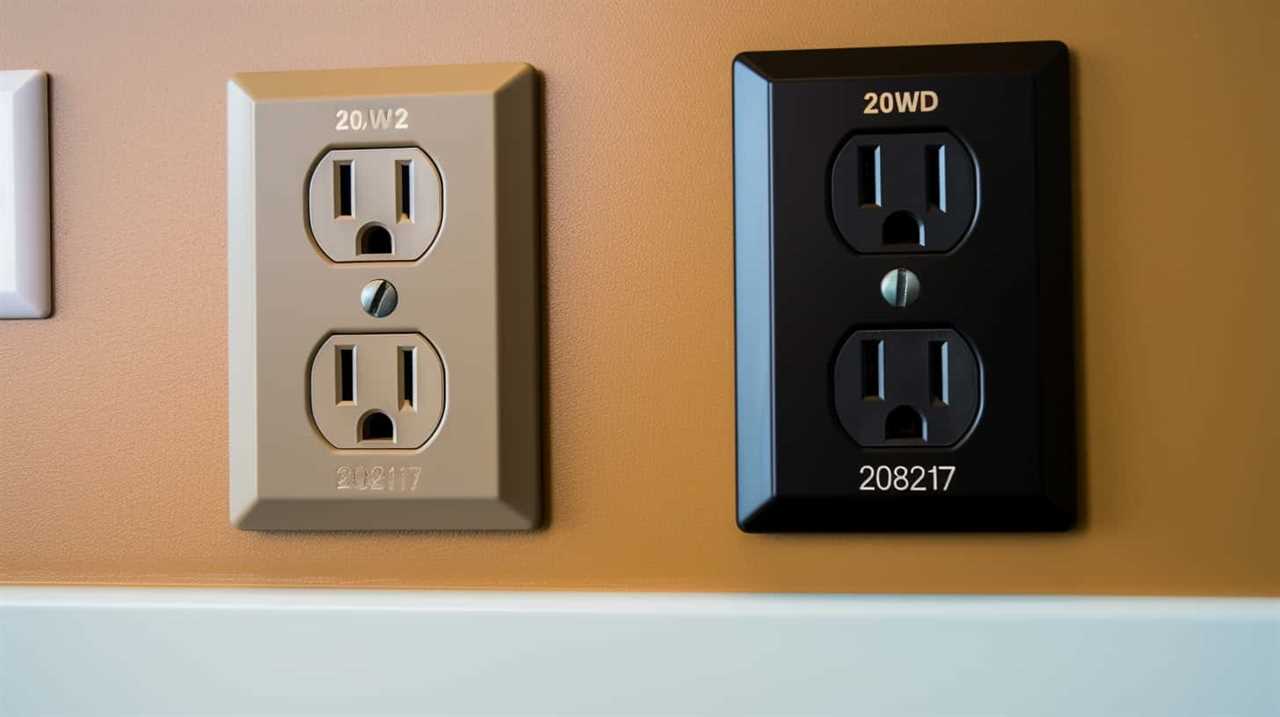
Key Takeaways
- AC power is used to power most homes and businesses, while DC power is commonly used in batteries and electronic devices.
- AC power is generated by power plants and transmitted through power lines, allowing for efficient transmission over long distances.
- DC power flows in only one direction and is suitable for powering smaller devices, providing a steady and constant flow of electricity.
- Transformers play a vital role in electrical distribution by transforming high-voltage electricity into lower voltages for home appliances, ensuring efficient and safe power distribution.
Understanding AC and DC
In our quest to understand AC and DC, let’s dive into the fundamental difference between these two types of electrical currents.
AC, or alternating current, is a type of electric current that constantly changes direction. It’s the most common form of electrical power used worldwide. AC power is generated by power plants and transmitted through power lines to our homes and businesses.
On the other hand, DC, or direct current, flows in only one direction. It’s commonly used in batteries and electronic devices.
Understanding the difference between AC and DC power is crucial for anyone seeking mastery in the field of electrical engineering. By comprehending the characteristics and applications of each type of electrical current, we can effectively design, install, and troubleshoot electrical systems.

The Difference Between Alternating Current and Direct Current
To further our understanding of AC and DC, let’s explore the key distinctions between alternating current and direct current. Understanding electrical currents is essential for mastering the field of electronics.
AC, or alternating current, is the type of electrical current used to power most homes and businesses. It flows in a continuous, back-and-forth motion, changing direction periodically. This constant change in direction allows for efficient transmission of electricity over long distances, making it ideal for power grids.
On the other hand, DC, or direct current, flows in a single direction without changing. It’s commonly used in batteries and electronic devices. DC provides a steady, constant flow of electricity, making it suitable for powering smaller devices that require a stable power source.
In comparison, AC is more suitable for long-distance transmission, while DC is better for powering smaller, more localized devices. Understanding the differences between AC and DC is crucial for designing and using electrical systems effectively.

The History of Electrical Power in Homes
Now, let’s delve into the history of electrical power in homes to gain a deeper understanding of how AC and DC have been utilized over the years.
The evolution of household electrical appliances has had a profound impact on modern living. In the late 19th century, when electricity was first introduced to homes, it was primarily in the form of direct current (DC). However, due to the limitations of DC, such as a limited transmission range, the development of alternating current (AC) became crucial.
AC power, pioneered by Nikola Tesla and popularized by George Westinghouse, allowed for more efficient distribution of electricity over long distances. This breakthrough led to the widespread adoption of AC power in homes, enabling the use of a wide range of electrical appliances that have revolutionized our daily lives.
As we explore how AC and DC are generated, we’ll see how these two forms of electrical power continue to shape our world today.

How AC and DC Are Generated
As we delve into the topic of ‘How AC and DC are generated’, let’s explore the methods used to produce these two forms of electrical power and their impact on home appliances. AC and DC are generated through different processes, each with its own set of advantages and applications.
AC, or alternating current, is generated using an AC generator, also known as an alternator. This device uses electromagnetic induction to produce a continuously changing current flow. AC power is commonly used in homes due to its ability to be transmitted over long distances without significant loss and its compatibility with many household appliances.
DC, or direct current, is generated through a process called rectification. This involves converting AC power into DC power using devices such as rectifiers or power supplies. DC power is often used in electronic devices, batteries, and certain appliances that require a steady and constant flow of current.
The table below summarizes the methods of AC and DC generation and their applications:

| AC Generation Methods | DC Generation Methods |
|---|---|
| AC generator (alternator) | Rectification |
| Electromagnetic induction | Conversion from AC to DC |
| Suitable for long-distance transmission | Suitable for electronic devices and batteries |
Understanding the methods of AC and DC generation is crucial in determining the compatibility of home appliances and ensuring efficient electrical power distribution.
The Role of Transformers in Electrical Distribution
Moving forward in our exploration of AC and DC generation, let’s now focus on the vital role that transformers play in electrical distribution.
Transformers are essential devices that enable the efficient transmission of electrical energy across long distances. They serve two primary functions: voltage conversion and impedance matching.
- Role of transformers
- Transformers convert high voltage electricity generated at power plants to lower voltages suitable for distribution to homes and businesses.
- They also step up the voltage for long-distance transmission to minimize power losses.
- Importance of voltage conversion
- Transformers allow for the safe and effective delivery of electricity by reducing the voltage to a level that can be used by appliances and devices.
- Voltage conversion helps mitigate the risks associated with high voltage transmission, such as electrical arcing and insulation breakdown.
Exploring the Advantages of AC Power
Our appliances benefit from the advantages of AC power.
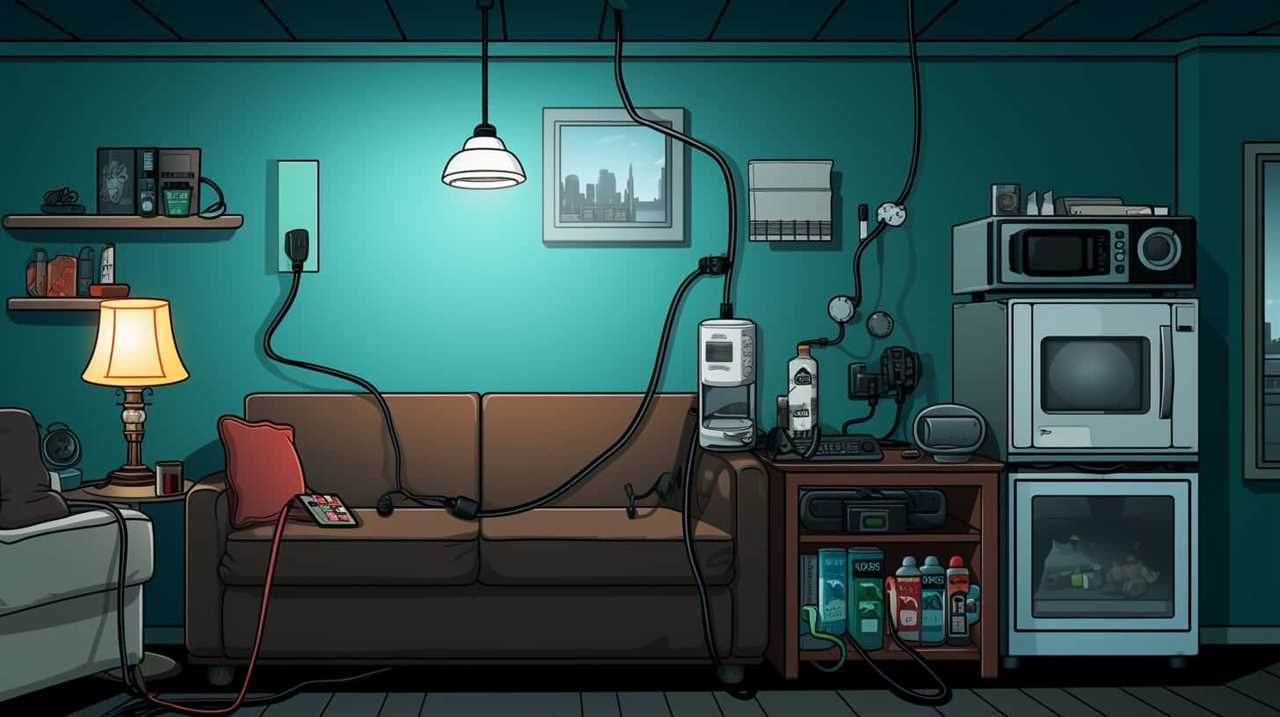
AC, or alternating current, has several key advantages over DC, or direct current.
One of the main advantages of AC power is its ability to be easily converted to different voltage levels using transformers. This allows for efficient transmission over long distances, making it ideal for powering homes and businesses.
AC power also provides better safety compared to DC. In the event of an electrical fault, the alternating nature of AC power allows for automatic disconnection, reducing the risk of electrical shock or fire.
Additionally, AC power is more suitable for powering motor-driven appliances due to its ability to change direction periodically.

These advantages make AC power the preferred choice for most home appliances.
Unveiling the Benefits of DC Power
Let’s delve into the advantages of DC power for home appliances. When it comes to using DC power, there are several benefits that make it an attractive choice for residential use. Here are some of the key advantages:
- Higher Efficiency: DC power is known for its superior efficiency compared to AC power. It minimizes energy losses during transmission and conversion, resulting in reduced electricity consumption and lower utility bills.
- Compatibility with Renewable Energy Sources: DC power is well-suited for integrating renewable energy sources such as solar panels and wind turbines. It allows for more efficient energy conversion and storage, maximizing the potential of clean energy generation.
- Improved Performance: DC power provides steady and consistent voltage, which is essential for the optimal performance of sensitive electronic devices. It reduces the risk of damage caused by voltage fluctuations, ensuring the longevity of appliances.
- Safety Considerations: DC power poses fewer safety risks compared to AC power, making it a safer option for home appliances, especially in terms of electrical shocks.
Now that we’ve explored the benefits of using DC power, let’s move on to the next section: AC versus DC: which is safer for home appliances.
AC Versus DC: Which Is Safer for Home Appliances
When it comes to the safety of home appliances, the debate between AC and DC power is an important consideration. Our focus will be on comparing the safety aspects of these two power sources.

We’ll also discuss the compatibility of home appliances with AC and DC power and how it impacts their overall safety.
Safety of AC Vs DC
To determine which type of electrical current is safer for home appliances, we must examine the safety implications of AC versus DC. Here are some key factors to consider:
- Voltage: AC generally operates at higher voltages than DC, which can pose a greater risk of electrical shock.
- Frequency: AC switches direction at a specific frequency (usually 50 or 60 Hz), which can make it more dangerous if not properly controlled.
- Arcing: AC can create arcs and sparks more easily than DC, increasing the risk of fires and electrical hazards.
- Grounding: AC systems typically have a grounding mechanism that helps protect against electrical faults.
While both AC and DC can be used safely, it’s crucial to follow proper safety measures, such as using circuit breakers, insulation, and grounding techniques. Ultimately, the safety of AC versus DC depends on proper installation, maintenance, and adherence to safety guidelines.
Home Appliance Compatibility
Our research shows that home appliances predominantly use AC power, but it is important to consider the compatibility and safety implications of AC versus DC for these appliances. When it comes to home appliance compatibility, AC is the preferred choice as it aligns with the standard power grid and is readily available in most homes. Additionally, AC power allows for easy voltage regulation and transmission over long distances. However, it is worth noting that some modern appliances, such as laptops and smartphones, use DC power internally and require an AC-to-DC converter.
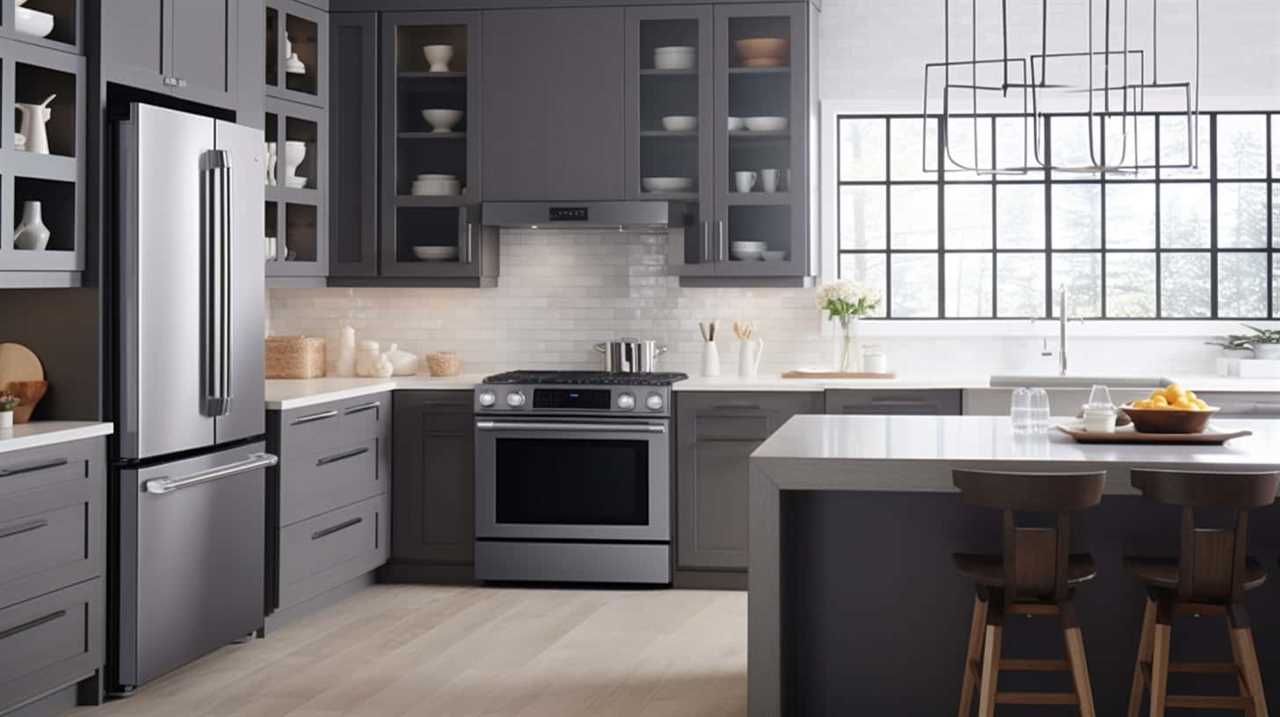
To further understand the compatibility and safety implications of AC and DC power for home appliances, let’s compare their characteristics in the following table:
| Category | AC Power | DC Power |
|---|---|---|
| Power Consumption | Higher due to voltage fluctuations | Lower due to stable voltage |
| Energy Efficiency | Lower due to power loss during transmission | Higher due to direct conversion |
| Compatibility with Grid | Compatible with standard power grid | Requires additional equipment for compatibility |
| Safety Implications | Lower risk of electrocution | Higher risk of electrocution, especially at high voltages |
Common Home Appliances That Use AC Power
What are some common home appliances that use AC power?
- Refrigerators: Refrigerators are one of the most energy-consuming appliances in a home. They rely on AC power to keep food cold and fresh.
- Air Conditioners: AC power is essential for air conditioners to function efficiently and cool down the indoor environment.
- Washing Machines: Washing machines also utilize AC power to run their motors, agitate clothes, and facilitate the cleaning process.
- Televisions: Televisions, whether LCD, LED, or plasma, require AC power to operate and display images.
These home appliances, among others, heavily rely on AC power for their functionality. It’s crucial to consider their power consumption and energy efficiency when choosing appliances for your home. By selecting energy-efficient models, you can reduce both your electricity bills and environmental impact.
Surprising Home Appliances That Use DC Power
Moving on to unexpected examples, some home appliances actually operate on DC power. These appliances are typically powered by solar energy, which generates DC electricity. Using DC power for home appliances offers several benefits. Firstly, it allows for efficient energy consumption as there is no need for AC-DC conversion, reducing energy loss in the process. Secondly, DC power is safer as it eliminates the risk of electric shock caused by AC power. Lastly, using DC power can be more cost-effective in the long run as it reduces the need for additional equipment such as inverters. Here is a 3 column and 5 row table showcasing some surprising home appliances that use DC power:
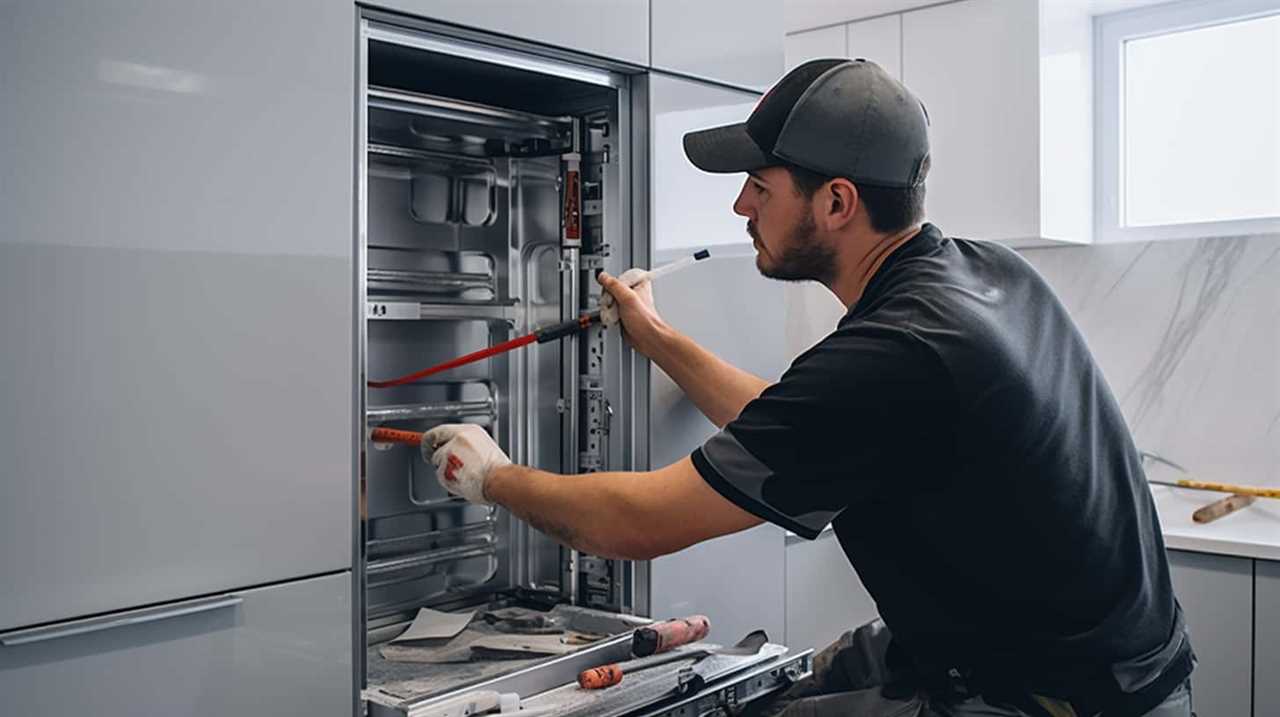
| Appliance | Function | Power Source |
|---|---|---|
| Solar fans | Ventilation | Solar panels |
| Solar water heaters | Heating | Solar panels |
| Solar refrigerators | Cooling | Solar panels |
| Solar-powered lights | Illumination | Solar panels |
| Solar-powered chargers | Charging | Solar panels |
Frequently Asked Questions
Can Home Appliances Run on Both AC and DC Power?
Home appliances can run on both AC and DC power. AC power is the standard in most homes, offering convenience and compatibility. However, DC power from renewable energy sources has the advantage of being more efficient and environmentally friendly.
What Are the Advantages of Using AC Power for Home Appliances?
What are the advantages of using AC power for home appliances? AC power offers efficient transmission over long distances, easy voltage regulation, and compatibility with existing electrical infrastructure, making it a reliable and cost-effective choice for home appliances.
Are There Any Safety Risks Associated With Using DC Power for Home Appliances?
Exploring the efficiency of using DC power for home appliances, we must also understand the potential hazards. Safety risks associated with DC power in household appliances include electrical shock, fire hazards, and limited power transmission distance.
Can AC Power Be Used to Power All Types of Home Appliances?
Yes, home appliances can run solely on DC power. This is because DC power offers several advantages such as increased efficiency and lower energy loss. Additionally, using DC power eliminates the need for AC to DC conversion.

Are There Any Home Appliances That Use a Combination of AC and DC Power?
Yes, there are home appliances that utilize a combination of both AC and DC power. This provides benefits such as improved efficiency and flexibility in power delivery, allowing for optimal performance and functionality.
Conclusion
In conclusion, while most home appliances use AC power, there’s a growing trend towards incorporating DC power in certain devices.
Interestingly, did you know that approximately 80% of electronic devices in a typical household, such as smartphones and laptops, actually operate on DC power?
This statistic highlights the increasing importance of DC power in our everyday lives and the potential for more efficient and sustainable energy consumption.
